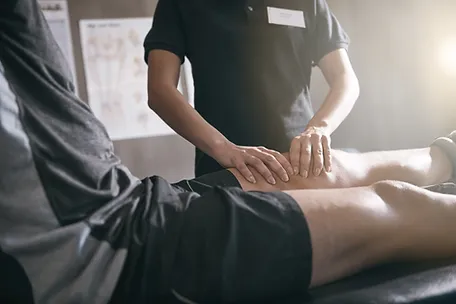Physical therapy is one of the most misunderstood disciplines in all of healthcare. We, as Physical Therapists, are often confused with massage therapists, chiropractors, personal trainers, and occupational therapists.

In the past few years, physical therapists have realized that we have a PR problem. The American Physical Therapy Association defines a physical therapist as “a trained and licensed medical professional with experience in diagnosing physical abnormalities, restoring physical function and mobility, maintaining physical function, and promoting physical activity and proper function.” (…And we wonder why people don’t know what we do…I don’t even understand our governing bodies definition of what we do.)
Physical Therapists, who try to explain it to the masses, tell people that we are THE MOVEMENT SPECIALIST. We watch people move, see what is bothering them, find the cause of the problem and develop a plan to correct the underlying issue as well as the overall difficulty doing things. Sometimes that includes a decrease in pain, increase in strength, improved ability to stretch, improved balance and joint/core stability, improved ability to walk, run, reach or lift, and an understanding on how to prevent further issues.
A visit to a physical therapist can assist you with the following 18 things (for a partial list):
- Reduce or eliminate pain
- Avoid Surgery
- Recover from a Surgery
- Improve mobility
- Improve balance and prevent falls
- Recover from and/or prevent a sports injury
- Improve sports performance
- Manage age related issues (such as arthritis, osteoporosis, or general deconditioning)
- Manage heart and lung disease
- Manage diabetes and vascular conditions
- Mange women’s health issues
- Recovery from a stroke or paralysis
- Help maintain independence
- Limit the need for pain medicine
- Teach you how to avoid injuries via ergonomics
- Teach compensation strategies for permanent injuries
- Improve ability to do your regular activities
- Recommend other professions that may be able to supplement your recovery

Licensed physical therapists can be found in outpatient offices, private practices, hospitals, rehab centers, nursing homes, home visits, sports and fitness settings, hospices, occupational settings, government agencies, schools, research centers, emergency rooms, and senior communities. Physical therapists may specialize in topics such as pulmonary, hand, neurology, pediatrics, women’s health, men’s health, burns, (and my 2 favorites) orthopedics and sports.
Despite those specialties, physical therapists were educated in each of the specialties and are among the select few healthcare practitioners who need to look at the “whole you” to decipher what is the best course of treatment for the “whole you”. Very often, a physical therapist with multiple years of experience will link something together that no one else has, because we look at the whole person and spend more time with you than any other medical practitioner as a function of our practice.
…But How Can a Physical Therapist Help?
A physical therapist takes care of people in all stages of healing and helps guide their patients from diagnosis through restoration to preventions. In other words, a physical therapist will define what is going on, help eliminate the pain, weakness, stiffness and limits in your ability to do what you do, and teach you how to maintain all these improvements.
When you go to a physical therapist, you can expect:
- To undergo a physical examination and evaluation, including a thorough history and various tests including an evaluation of posture, a check of your range of motion, flexibility and joint movement, a strength assessment, balance check, stability check and various tests of your movement ability.
- A discussion of your clinical diagnosis, expected outcome, goals, and the plan of care
- Treatment, including
- Stretching
- Strengthening
- Balance training
- Core stability training
- Specific joint stability training
- Manual therapy including joint mobilizations, soft tissue work, passive range of motion, myofascial release, trigger point therapy, instrument assisted soft tissue mobilization, and many more
- An education in a home exercise program
- Training on ways to perform normal tasks to avoid injury
- Modalities, such as heat, ice, electric stimulation, ultrasound, and/or laser therapy
- Postural training
- Discussions of strategies on how to avoid injury in the future
- A very specific and varied program that is designed solely with you in mind, regarding your level of activity, goals, and injury in mind.

So long story short…What does a Physical Therapist Do?
We give you the meaning back to your life by helping you reach your goals so you can enjoy your life!

